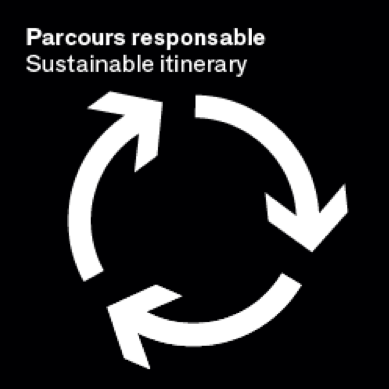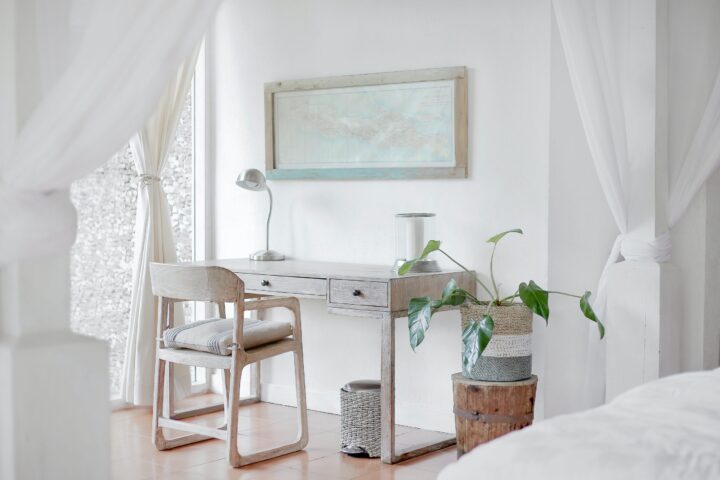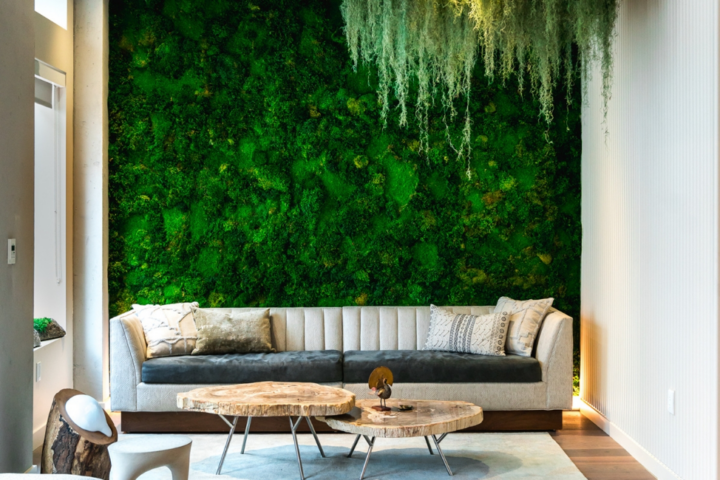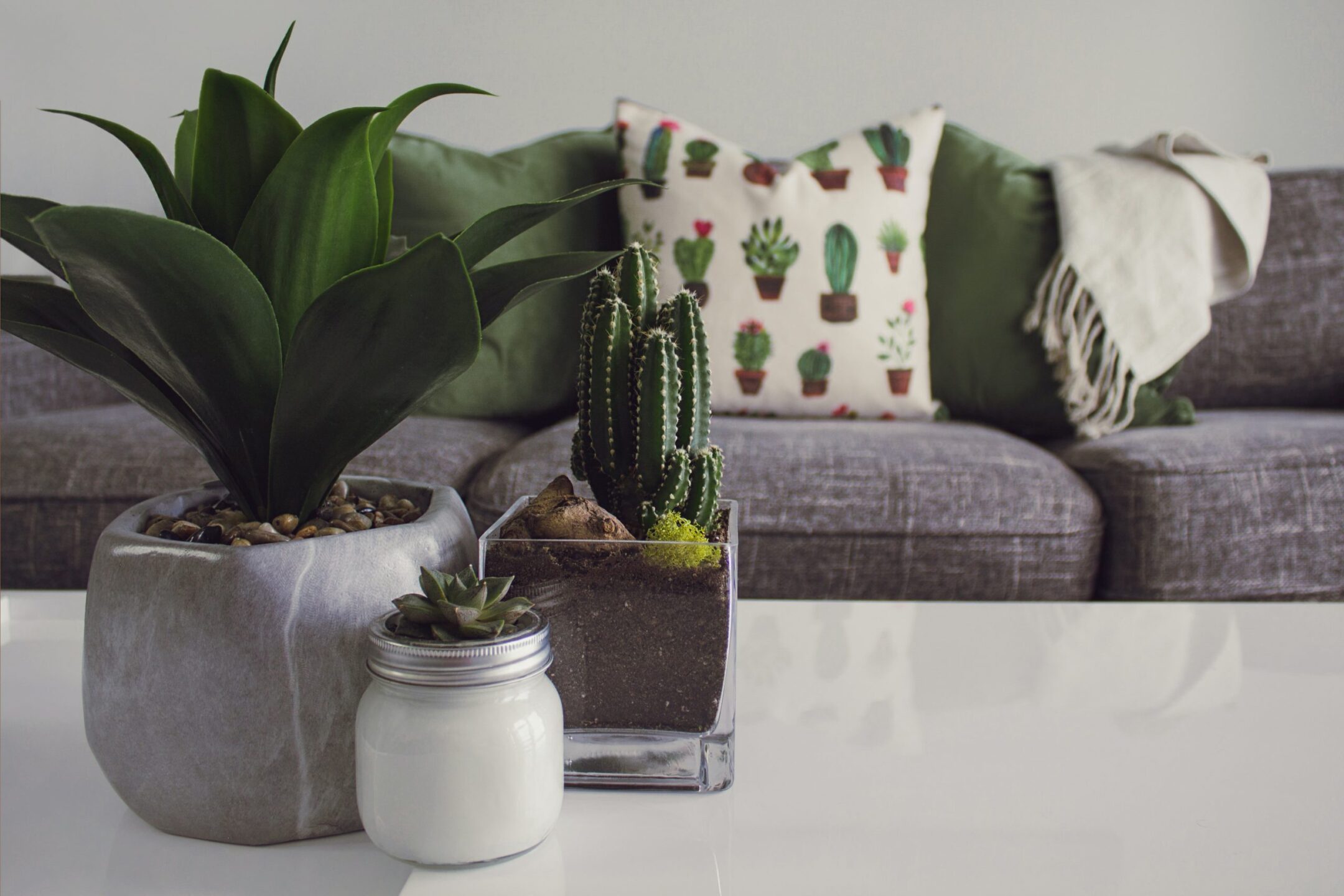
Many of us have had time to tackle our spring cleaning with unprecedented gusto these past few months, and now we are welcoming summer. We are opening our windows, breathing deep, and hitting our internal refresh button.
Many of the clients, architects, and interior design colleagues that I have been meeting with virtually are also talking about how current systems need a refresh. Ways of life that have been designed and built up across the globe in the past decades are not honorable, responsible, or sustainable. In the simple act of clearing out our attics, closets, and garages in 2020, it has become crystal clear that the “throwaway” culture we have been buying into has had negative environmental, psychological, and physical impacts.
We now want our material goods to appeal to our senses of beauty and function, and to last longer; but, we also want items we bring into our homes, offices, and public spaces to be made in ways that do not damage our health or the health of the planet.
Since starting Laurence Carr Design, I have supported doing what I love—reimagining, reorganizing, rebuilding and redesigning interiors—by supporting the circular economy.
The Ellen MacArthur Foundation, launched in 2010, notes that the circular economy is based on “the principles of designing out waste and pollution, keeping products and materials in use, and regenerating natural systems.”
The Butterfly Diagram provides a great visual on the circular economy framework.
The old “take, make, and toss” philosophy is a thing of the past. It is no longer workable, and it is unattractive. Billions of dollars in material goods end up in landfills annually.
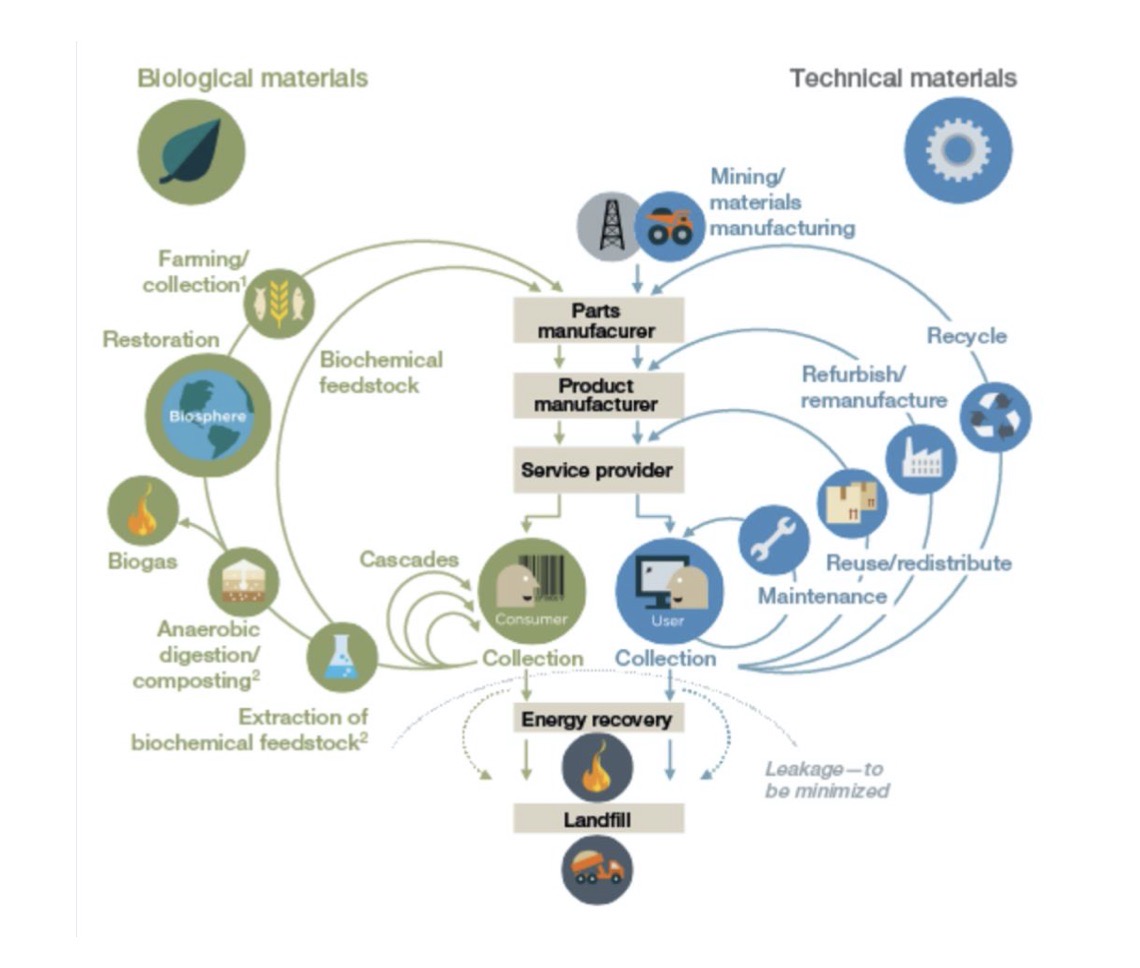
To paraphrase Sarah O’Sell, whose interest in the Circular Economy was sparked in part by her work in 3D printing and its modularity–the Circular Economy strives to:
Anticipate production waste sources of any given product, extract those wastes in their by-product form, and safely add them back into the system, or re-use them locally.
Cut demand for new resource use and extend the lifetime of what we purchase by going back to the basics, such as repairing and refurbishing products, or subscribing to “reuse” or rental services.
Shift to a healthier balance between biological (i.e. farming) versus technical (i.e. mining) material applications, aligning manufacturing processes and materials more closely with final product usage, function, or expected shelf life.
At Laurence Carr Design, I have been paying attention to The Ellen MacArthur Foundation, and the ways in which they partner with large multinational corporations such as Google, and with smaller but equally innovative brands that aim to alter the design, manufacturing, and lifespan of “medium life bulky products,” or MLBPs, such as sofas, mattresses, and carpets.
One such company is DSM-Niaga, out of the Netherlands. Niaga, which is the word “again” spelled backwards, offers the Auping Evolve, “the world’s first circular mattress.” The mattress won the Red Dot Product Design Award in 2020. DSM-Niaga makes carpeting as well, following their three earth-friendly principles in the manufacturing process: “Keep it simple; clean materials only; use reversible connections” (to make for easier and less toxic recycling when the time comes). The adhesives that brands like DSM-Niaga use contain no carcinogens or mutagens.

Companies such as Coyuchi know that aesthetics and a consumer consciousness toward durability and sustainability go together. Their organic pajamas and sheets make sleeping in on weekends a true sensorial pleasure. Their blankets and beach towels invite more summertime lounging and relaxation.
If you have been avoiding buying second-hand home or office furniture and accessories because you thought you would have to skimp on taste, class, or quality, think again. AptDeco and Chairish showcase just how eager we are to step into a top-of-the-line upcycling and recycling interior design reality. Fernish, a furniture subscription system that curates pieces from eco-friendly brands such as Crate and Barrel and CB2 says, “Fast Furniture is Out. Made-to-Last is In.” If you are someone who changes their décor with the seasons or on a whim, these services help you do so in a more circular and responsible way.
We are redefining what we value and recreating new ways of extracting materials, enjoying them, and exchanging them. Tossing heaps of shoes, sofas, tableware, kitchen cabinetry, and armoires into landfills profits no one, least of all, future generations.
Consumers and designers are smarter than ever, and we are connecting more than ever to act as stewards to our Earth. I would love to hear the ways in which you are partaking in the circular economy. What have your challenges and triumphs been?
If you want to chat with Laurence Carr Design about making interior design choices that are healthier for you, your loved ones, and the planet, reach out here for a consultation.
